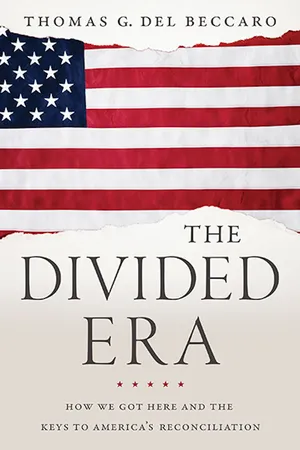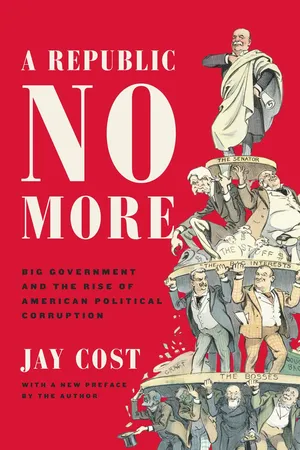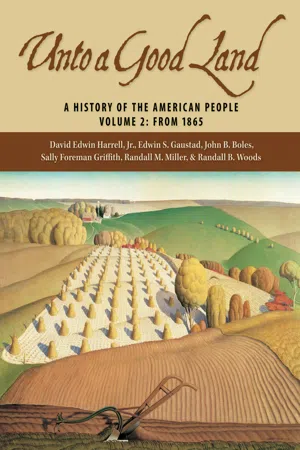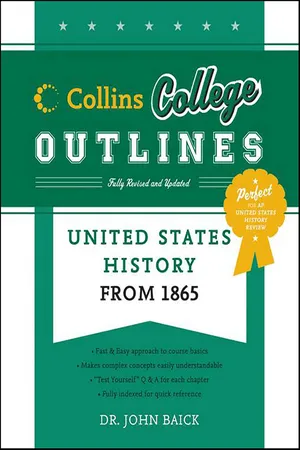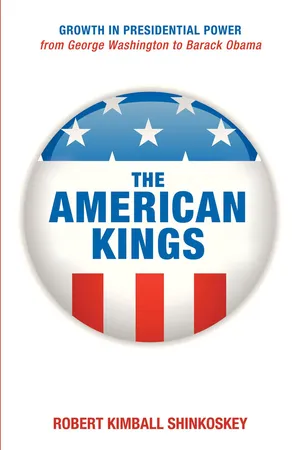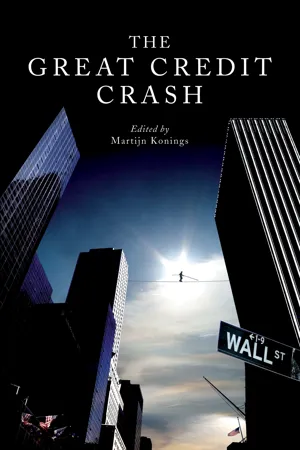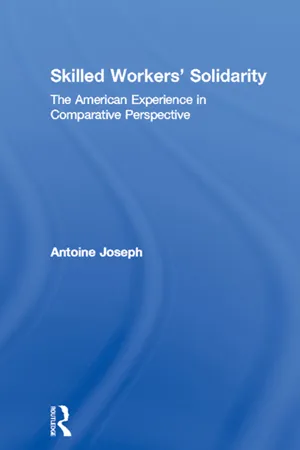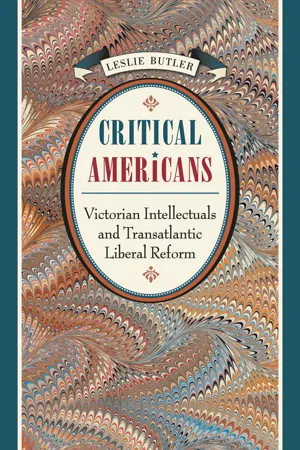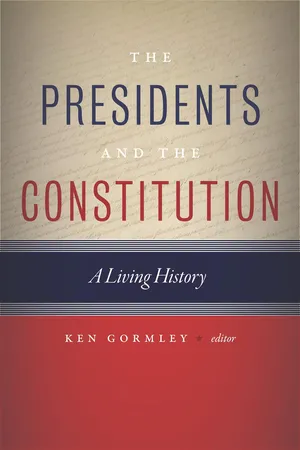History
Gilded Age Politics
Gilded Age politics refers to the political landscape in the United States during the late 19th century, characterized by widespread corruption, corporate influence, and a lack of government regulation. Political machines, such as Tammany Hall in New York City, wielded significant power, and there was a growing divide between the wealthy industrialists and the working class. This era saw the rise of influential political figures like Boss Tweed and the implementation of patronage systems.
Written by Perlego with AI-assistance
Related key terms
12 Key excerpts on "Gilded Age Politics"
- Gregory Feldmeth, Christine Custred, Christine Custred(Authors)
- 2015(Publication Date)
- Research & Education Association(Publisher)
Chapter 8 Industrialism and the Gilded Age (1865–1898)The period between the end of the Civil War and the beginning of the 20th century is known as the Gilded Age. Mark Twain first used the term “Gilded Age” to describe the years after the Civil War. He saw rampant greed, materialism, and corruption dominating American political and social life and viewed the outward appearance of prosperity and gaiety as being nothing more than a thin coating of gold on a fundamentally flawed society.Politics of the Period, 1877–1882The presidencies of Abraham Lincoln (1861–1865) and Theodore Roosevelt (1901–1909) mark the boundaries of half a century of relatively weak executive leadership, and legislative domination by Congress and the Republican Party.The Compromise of 1877With Southern Democratic acceptance of Rutherford B. Hayes’s Republican presidency, the last remaining Union troops were withdrawn from the Old Confederacy (South Carolina, Florida, Louisiana), and the country was at last reunified as a modern nation-state led by corporate and industrial interests. The Hayes election arrangement also marked the government’s abandonment of its earlier vague commitment to African American equality.Republican Factions“Stalwarts” led by New York Senator Roscoe Conkling favored the old spoils system of political patronage. “Half-Breeds” headed by Maine Senator James G. Blaine pushed for civil service reform and merit appointments to government posts.Election of 1880In the 1880 presidential election, James A. Garfield of Ohio, a Half-Breed, and his vice presidential running mate, Chester A. Arthur of New York, a Stalwart, defeated the Democratic candidate, General Winfield S. Hancock of Pennsylvania and former Indiana congressman William English. Tragically, the Garfield administration was brief, as the president was assassinated in 1881 by a disturbed office-seeker, Charles Guiteau. Though lacking much executive experience, the stalwart Arthur had the courage to endorse reform of the political spoils system by supporting passage of the Pendleton Act (1883), which established open competitive examinations for civil service positions.- eBook - ePub
The Divided Era
How We Got Here and the Keys to America's Reconciliation
- Thomas Del Beccaro(Author)
- 2015(Publication Date)
- Greenleaf Book Group Press(Publisher)
Gilded Age was that three of the four American presidents assassinated in our history, Lincoln, Garfield, and McKinley, were presidents during that time. Blood sport indeed.It is time to place the Gilded Age in context with our own Divided Era. Enormous and consequential issues were decided during the Gilded Age even though government spending was as yet less than 10 percent of the national economy. What type of currency we used had a great effect on people—it drove the direction of the US economy. The patronage system meant jobs and power. Tariffs protected whole industries and required others to pay taxes. The Southern Question meant the Civil War was not politically over and that freedom hung in the balance for many. Beyond a simple desire for the power to decide such issues, the political parties and the press were also fueled by an equal if not greater desire for government spoils and money. Altogether, it meant that the Gilded Age was an age of dramatic partisanship. Indeed, to “those within the mainstream political culture, partisanship seemed as natural as the seasons, though nowhere near as variable.”209Historian Charles W. Calhoun concluded of the age that “in no other era in American history has citizen interest in politics and governance been more intense.”210 We can fairly conclude the same, all the time understanding that catalyst was government action—the desire to take such action, to control it, and to benefit from it. All in all, the importance of being in power reached new peaks from 1860 to 1900. As for Americans as a whole, it was understandably impossible for them to stand on the sideline during the Civil War while the nation’s fate—and often their own—was decided. In the wake of the war, Reconstruction involved a dramatic use of political and military power, which sought to determine not only the nature of our governments but also the fate of race relations—if not our very culture. Once again, Americans could not help but be engaged in a process that promised or threatened to affect so many. Building on those unfinished battles, the major decisions being made to decide issues old and new, during the Gilded Age - eBook - ePub
A Republic No More
Big Government and the Rise of American Political Corruption
- Jay Cost(Author)
- 2016(Publication Date)
- Encounter Books(Publisher)
5 “The King of Frauds” Business and Politics in the Gilded AgeT HE GILDED AGE after the Civil War is usually remembered as an anomalous era of unprecedented corruption. Morals fell to shambles, avaricious politicians rose up, and there was an epic collapse in public ethics. None of this had ever been seen before, so the thinking goes.In an important sense that is most definitely the case, for the country had never seen corruption quite as bad as existed in the two or three generations following the Civil War. But in another sense, that is not true. As we saw in the last chapter with the spoils system, while the level of patronage-based corruption may have increased, there was no qualitative difference between the Gilded Age and the Jacksonian period. Instead, the spoils system was perfected, in a perverse sense of the word. Politicians became more adept at using government jobs to grow and maintain political organizations, and in turn to bilk the public more efficiently than Andrew Jackson’s cronies ever did.The story is the same when we consider the other main theme of Gilded Age corruption, currying favor with big business. In Chapter One, we saw corruption spring up over governmental efforts to support the economy, in the case of the Bank of the United States. A former Treasury Department official used insider information to game the system, members of Congress were on the take, and even the stately Hamilton allowed details of his plans to become known to speculators. As we saw in Chapter Two, these trends continued through the Jeffersonian and Jacksonian eras; as government did more to grow the economy, business-oriented corruption similarly grew. This “progress” continued apace in the Gilded Age. It was not that this form of corruption—of public officials and businessmen conniving for private goals—was unheard of prior to the 1880s. Far from it. Instead, as rapid economic growth depended more and more on governmental policies, the incentives and opportunities for businessmen to involve themselves in politics became greater. Meanwhile, with federal jobs no longer an available patronage outlet, and the costs of campaigns ever-growing, politicians sought new sources of funds to manage their political empires. Thus, new forms of corruption did not emerge; instead, old forms proliferated and became more sophisticated, organized, and even accepted. - eBook - ePub
Unto a Good Land
A History of the American People, Volume 2: From 1865
- David Edwin Harrell, Edwin S. Gaustad, John B. Boles, Sally Foreman Griffith(Authors)
- 2005(Publication Date)
- Eerdmans(Publisher)
21 The Politics of the Gilded Age Chapter 21 at a Glance Political Parties and Political Stalemate A Delicate Balance of Power Muted Differences Political Culture Lingering Effects of the Civil War Getting Out the Vote The Spectacle of Campaigns Women’s Influence Reining in the Spoilsmen The Appeal of Civil Service Reform Newspapers and Reform Impetus for Reform The Presidency and Congress Remade The Money Question The Depression of 1893 and the Gold Standard The Populist Challenge Farmers Come Together Populist Themes The Cross of Gold and the Election of 1896 Conclusion: The End of the Old and the Rise of the New I N HIS NOVEL The Gilded Age (1873), written with Charles Dudley Warner, Mark Twain gives a tour of the nation’s capital. It teems with schemers, lobbyists, jobbers, and other rogues eager to fleece the public and an equal number of innocents abroad gullible and greedy enough to be easy prey. Men and women intrigue for congressional favors and patronage and push countless false hopes for the fast buck, from eyewash (“the Infallible Imperial Oriental Optic Liniment”) to railroad land grants, all under the guise of the public good. Bribery, vote stealing, and gaseous oratory distinguish the successful politician. An honest person is a fool. So corrupting is the political and social world Twain describes that it transforms the once virtuous orphan girl heroine of his story into a hardboiled lobbyist who ends her life in scandal. An air of impermanence and swindle blows everywhere through the seat of the Republic. Washington, by Twain’s count, also has “more boarding-houses to the square acre … than any other city in the land,” but if you try to pass yourself off as a congressman in seeking a room in any one of them, the landlady will say “full” or demand payment in advance - eBook - ePub
- G. R. Thompson(Author)
- 2011(Publication Date)
- Wiley-Blackwell(Publisher)
Chapter 16 The “Gilded Age” Genteel Critics and Militant MuckrakersThe Gilded Age (1873) by Mark Twain and Charles Dudley Warner gave the Age of Big Business one of its most memorable labels. In American cultural history, the term “Gilded Age” invokes the period from the end of the Civil War through the 1890s, and slightly beyond. Associated with the rapid rise of Big Business are the Labor Movement, the Factory System, and the attempt of Corporate Capital (personified as the Robber Barons) to control it all – by violence if necessary. Within this time frame, political historians have identified other periods, most notably Reconstruction and the Progressive Era, terms embodying the contradictory tendencies of the times. But for most literary scholars and cultural critics, the “Gilded Age” is the label that has stuck.1The term emphasizes the problems and evils of laissez-faire capitalism. Gilded means covered with a thin layer of (usually) fake gold. In their comic Dickensian way, Twain and Warner strip away the pretty surface and expose the ugliness beneath the top layer of society, politics, and business. The word gilded also suggests American Victorian respectability and artifice, from the gilt-edges and decorations of fake books in simulated libraries, to elaborate gilded picture frames in over-decorated parlors, to insincere piety regarding personal behavior and business ethics.Novels of social criticism in the era generally took one of two forms: “genteel criticism” and “muckraking.” Among the Genteel Critics and historical romancers who sometimes cast a jaundiced eye on American manners, morals, and institutions are Henry Adams, Booth Tarkington, Winston Churchill, Robert Herrick, and W. D. Howells. The Muckrakers wrote both fiction and nonfiction in which they more militantly exposed the ugly underside of American capitalism and putative democracy. Important muckraking works include novels by Rebecca Harding Davis, John William De Forest, and David Graham Phillips; and journalistic exposés by Ida Tarbell, Lincoln Steffens, Jacob Riis, Thorstein Veblen, and Helen Hunt Jackson. The most famous of the American muckraking novels is Upton Sinclair's The Jungle - No longer available |Learn more
- John Baick, Arnold M. Rice(Authors)
- 2011(Publication Date)
- Collins Reference(Publisher)
In the last third of the nineteenth century each administration—whether Democratic or Republican—was hampered by factional quarrels or a lack of constructive leadership—or both. From the beginning of Ulysses S. Grant’s first term of office in 1869 to the end of the second Grover Cleveland term in 1897, the professional politicians were slow to face the new problems that arose out of economic changes. They were more interested in winning elections and dispensing patronage. Because the most important national problems—the regulation of industry, the control of the railroads, the settlement of management-labor disputes, the support of beneficial tariff schedules, the maintenance of a satisfactory currency system—were apt to cut across party lines and impair party discipline, political leaders either avoided them or dealt with them only in evasive generalizations. Demands for reform were met with strong opposition from politicians. In a sense, it was an era of bipartisan cooperation with the goal of limited and corrupt government.The two terms of Grant overlapped with Radical Republican efforts to reconstruct the South, but they also overlapped with another development in American history: the Gilded Age. Author Mark Twain published the novelThe Gilded Agein 1873, in which he satirized the unprecedented corruption to be found in public service and private industry. The term would later be used to define the period in American history. From a government that was oblivious at best to complicit at worst to financiers and speculators and other business leaders who were willing to do almost anything to gather more wealth, the last third of the century saw the creation of a new national political order that matched the new economic order. It was a political order that ignored the growing national problems of the time, in large part because politicians were responsible for so many of the problems in their reckless and selfish focus on the accumulation of wealth for the few at the expense of the many.THE GRANT PRESIDENCY AND ITS SCANDALSThe period of Grant’s presidency was marked by scandals. Corruption, some of which originated in the Civil War, pervaded the times. The unprecedented growth of big business during Reconstruction, with its pursuit of more profits, led many to discard the older, communal moral code in favor of a freer or looser personal one. Corruption existed not only at the federal level of government but also at the state and local levels. The corrupt activities of many state governments in the South and of the New York City political machine headed by William M. “Boss” Tweed were exposed to the American people, but with little lasting change. Although Grant was personally honest, his reputation as chief executive suffered from his failure to stem the tide of corruption. - eBook - ePub
The American Kings
Growth in Presidential Power from George Washington to Barack Obama
- Shinkoskey(Author)
- 2014(Publication Date)
- Resource Publications(Publisher)
4The Gilded Age and America ’s One Party System
T he period of time after Reconstruction is marked by advancing industrialization and increasing wealth of the industrialists, and to a lesser extent the people of the nation. It was even possible for politicians to talk of limiting or abolishing national taxes altogether in the early 1880 s. It was also politically correct to rail against pork barrel spending (passing laws or budgets to direct government money to one’s home district) and government surpluses. Republicans had a lock on political power, while southern Democrats were only gingerly and slowly re-assimilated into the political scene.This was a time when presidents could still be proud of their own honesty, moral decency, and personal responsibility, and therefore set an example for the nation’s citizens, as Grover Cleveland demonstrated. At the same time, a new political attitude was becoming manifest on the previously anti-imperial Republican side of the aisle. This bravado included a strong urge to expand trade by means of building and brandishing a muscular American navy, and to find a wide variety of rationales for that new policy. This new masculinity grew out of the force demonstrated by northern soldiers during the Civil War. Several young northern military leaders matured into politicians and then became presidents. While Republicans of this group like Teddy Roosevelt were becoming increasingly irritated with and excited about events in Cuba and Latin America, and interested in possibilities for mischief in the Pacific, the one Democrat president of the group, Grover Cleveland, loudly declined to enter into wars or alliances in Latin America. For example, he resisted taking an aggressive stand with Spain over events in Cuba.The new manliness also manifested in enlarging the legislative role of the presidency and specifically the role it would play in economic and labor relations. Even Grover Cleveland succumbed to the temptation to involve the presidency in labor disputes. At the same time the presidents resisted welfare, retirement, and disaster spending by the national government and the taxation that would be required to implement such programs. A couple of the presidents in this group of eight were heavily affected by the Second Great Awakening taking place in the middle of the nineteenth century. Republicans Benjamin Harrison and William McKinley were two of America’s most genuine and devoted Christians. While privately extremely devotional, they did not mind an occasional public display of affection for the Creator and conveying a sense that they understood the Creator’s wishes for the nation. That Creator turned out to be decidedly blood-lusty. - eBook - ePub
- Jeffrey Sommers, Martijn Konings, Jeffrey Sommers, Martijn Konings(Authors)
- 2020(Publication Date)
- Verso(Publisher)
POLITICSPassage contains an image
14
THE GREAT SILENCE
Their Gilded Age and OursSteve FraserGoogle “second Gilded Age” and you will get ferried to 7,000 possible sites where you can learn more about what you already instinctively know. That we are living through a Gilded Age has become a journalistic commonplace. The unmistakable drift of all the talk about it is a Yogi Berra-ism: it’s a matter of déjà vu all over again. But is it? Is turn-of-the-century America a replica of the world Mark Twain first christened “gilded” in his debut bestseller back in the 1870s?Certainly, Twain would feel right at home today. Crony capitalism, the main object of his satirical wit in The Gilded Age, is thriving. Incestuous plots as outsized as the one in which the Union Pacific Railroad’s chief investors conspired with a wagon-load of government officials, including Ulysses S. Grant’s vice president, to loot the federal treasury once again lubricate the machinery of public policy-making. A cronyism that would have been familiar to Twain made the wheels go round during the years of the Bush administration. Even the invasion and decimation of Iraq was conceived and carried out as an exercise in grand strategic cronyism; call it cronyism with a vengeance. All of this has been going on since Ronald Reagan brought back morning to America.Reagan’s America was gilded by design. In 1981, when the New Rich and the New Right paraded in their sumptuous threads in Washington to celebrate at the new president’s inaugural ball, it was called a “bacchanalia of the haves.” Diana Vreeland, style guru (as well as Nancy Reagan confidante), was stylishly blunt: “Everything is power and money and how to use them both … We mustn’t be afraid of snobbism and luxury.” - eBook - ePub
Skilled Workers' Solidarity
The American Experience in Comparative Perspective
- Antoine Joseph(Author)
- 2013(Publication Date)
- Routledge(Publisher)
CHAPTER 5The Political Contours of Class Conflict in the Gilded Age
Between 1870 and 1900, policy conflicts often came down to tests of strengths between the agrarian and industrial social orders (Ladd, 1970:178). At the beginning of the Gilded Age, sectional cleavages were dominant—a result of the divisions that led to the Civil War. The core constituencies of the Gilded Age working class were native white and Northern and Western European skilled craftsmen, and newly arriving immigrant unskilled factory laborers. But the narrowness of these divided constituencies limited labor's capacity to influence national politics. During the 1890s the political divisions between skilled and unskilled labor were crystallized by their movement into opposite parties (Mink, 1990). Once that happened the strength of labor in state and local contests was more than offset by national impotence. Generally then, for most of the late nineteenth century, the labor constituency's national voice was both minor and incoherent.In this chapter, I will argue that the particularism of political machines ran parallel to (and thereby reinforced) labor's particularism in the workplace. The fact that the American electoral system was and is a plurality system has had several consequences on the political development of its labor movement. Plurality systems minimize conflict, moving competition in a centripetal, consensus-building direction (Sartori, 1976). Burnham (1982) has persuasively argued that the declining relevance of political alternatives is a key component in explaining the lower turnout of the nonaffluent. Thus, the high proportion of low-income non-voters may have been a consequence of the conflict reducing properties of a plurality electoral system that, in reducing the ideological distance between parties, minimized the prospects of a clear choice between alternative programs. Increasingly stringent registration procedures in urban areas most certainly helped to undermine the political interest and influence of urban, predominantly working-class, and immigrant voters. The response common to those consistently finding themselves to be on the losing side of political struggles was alienation and a growing disinterest in political issues. Both were symptoms of demobilization. - eBook - ePub
Critical Americans
Victorian Intellectuals and Transatlantic Liberal Reform
- Leslie Butler(Author)
- 2009(Publication Date)
- The University of North Carolina Press(Publisher)
Liberal men of letters demonstrated an unwavering belief in politics by continuing their involvement in public life, by understanding it as a necessary component of a larger cultivating mission, and by hailing it as what Lowell termed the “noblest exercise of man’s intellect and the best training of his character.” The postbellum criticism offered by liberal reformers was sharp, and it regularly conveyed the same uncompromising sense of duty that had motivated the group’s earlier attacks on slavery and the expansionist war against Mexico. Yet for all the severity of these critiques, Gilded Age liberal politics was no more likely to breed withdrawal or alienation than did the cultural endeavors undertaken by these same intellectuals. In both spheres, the prevailing liberal stance was that of a “jaunty jeremiah” capable of combining harsh criticism with a measured expectation that political progress was more likely to be achieved in America than anywhere else in the world. 3 The liberal political program was not as consequential as the initiatives that this cohort pursued in the cultural realm, but the long-term significance of such efforts remained quite impressive. Liberal reformers never became a true establishment in Gilded Age Politics, in part because it is unclear whether that is what they truly desired. Their voices were heard and their criticisms were sometimes heeded by those closer to the machinery of governance. The liberals’ critique of Gilded Age Politics included many blind spots. Their inattention to many of the challenges presented by urban poverty, enduring racism, and the concentration of industrial power would cause “New Liberals” and Progressives of a later generation to belittle the earlier reform vision as overly timid and naive - Thomas C. Patterson(Author)
- 2020(Publication Date)
- Routledge(Publisher)
6 Anthropology in the New Gilded Age, 1990–2019The marked inequalities and exploitative social relations of the present remind some writers of the Gilded Age (e.g., Piketty 2014 :348–50). The late nineteenth century remains “a symbol of corruption, greed, extravagance, and exploitation” on the historical landscape of the United States, when there were continuous struggles over alternative visions of what society and the state should be, “who would rule and be ruled, whose vision of political economy and social relations would prevail, and who would pay the price” (Hahn 2018 :27–8). It was a time of turmoil, uncertainty, indiscretion, and marked inequality not unlike U.S. society today.The last twenty years have been wracked by virtually non-stop economic and social crises. These included the dot.com recession of 1999–2001, when the price of overvalued stocks dropped precipitously. Shareholders lost $6 trillion of their investments; companies went bankrupt and disappeared; more than 2 million workers lost their jobs; and hundreds of thousands lost their homes and savings. Home construction surged in many parts of the country between 2002 and 2007. Home ownership—the way the working classes have typically invested and saved money—peaked at nearly 70 percent. Many used low interest rates and readily available credit as remedies for delayed or deferred spending after thirty years of stagnant wages. Household debt soared as some bought houses or speculated in the housing market, making use of sub-prime loans and adjustable-rate mortgages that promised low initial payments for buyers and quick, high rates of return for lenders. The whole edifice collapsed during recession of 2007–2008. The stock market declined by 50 percent, and shareholders lost $13 trillion. Working-class families experienced a rapid decline in their standards of living; 4 million lost their homes through foreclosures; others went bankrupt; and still others walked away from mortgages that were larger than the value of their homes.- eBook - ePub
The Presidents and the Constitution
A Living History
- Ken Gormley(Author)
- 2016(Publication Date)
- NYU Press(Publisher)
Benjamin Harrison (New York: Henry Holt, 2005).2 . See, for instance, Jacob A. Riis, How the Other Half Lives: Studies Among the Tenements of New York, ed. David Leviatin (Boston and New York: St. Martin’s Press, 1996).3 . Robert W. Cherny, American Politics in the Gilded Age, 1868–1900 (Wheeling, IL: Harlan Davidson, 1997), 140; H. Wayne Morgan, From Hayes to McKinley: National Party Politics, 1877–1896 (Syracuse, NY: Syracuse University Press, 1969), 423; R. Hal Williams, Years of Decision: American Politics in the 1890s (New York: John Wiley and Sons, 1978), 64–65.4 . James D. Richardson, A Compilation of the Messages and Papers of the Presidents, 1789–1897 (Washington, DC: Government Printing Office, 1898), 9:43, 54–56.5 . Williams, Years of Decision, 36.6 . Michael J. Gerhardt, The Forgotten Presidents: Their Untold Constitutional Legacy (New York: Oxford University Press, 2013), 146.7 . Wayne D. Collins, “Trusts and the Origins of Antitrust Legislation,” Fordham Law Review 81 (April 2013): 2315–2319.8 . Sean Dennis Cashman, America in the Gilded Age (New York: New York University Press, 1993), 36–44.9 . 15 U.S.C. §§ 1, 2. Homer E. Socolofsky and Allan B. Spetter, The Presidency of Benjamin Harrison (Lawrence: University Press of Kansas, 1987), 52–55; Cherny, American Politics in the Gilded Age, 91. Vigorous prosecution of trusts, however, did not follow until the early twentieth century. Even if President Theodore Roosevelt wanted to get serious about “busting” the trusts, the federal government would have to figure out which trusts could be prosecuted after a Supreme Court ruling in 1895 in a case involving the sugar trust, United States v. E.C. Knight Co., limiting the scope of the Sherman Anti-Trust Act.10 . Gordon B. McKinney, Henry W. Blair’s Campaign to Reform America: From the Civil War to the U.S. Senate (Lexington: University Press of Kentucky, 2013), 88–89, 92–95, 97, 113, 117, 119–121, 123; Stanley P. Hirshson, Farewell to the Bloody Shirt: Northern Republicans and the Southern Negro, 1877–1893
Index pages curate the most relevant extracts from our library of academic textbooks. They’ve been created using an in-house natural language model (NLM), each adding context and meaning to key research topics.

